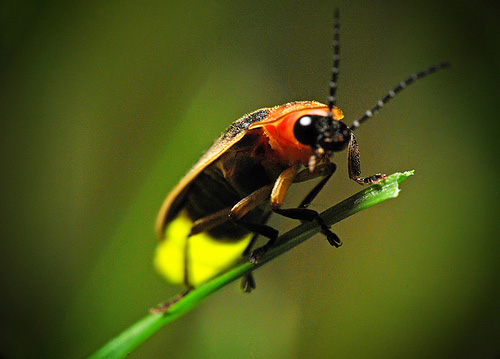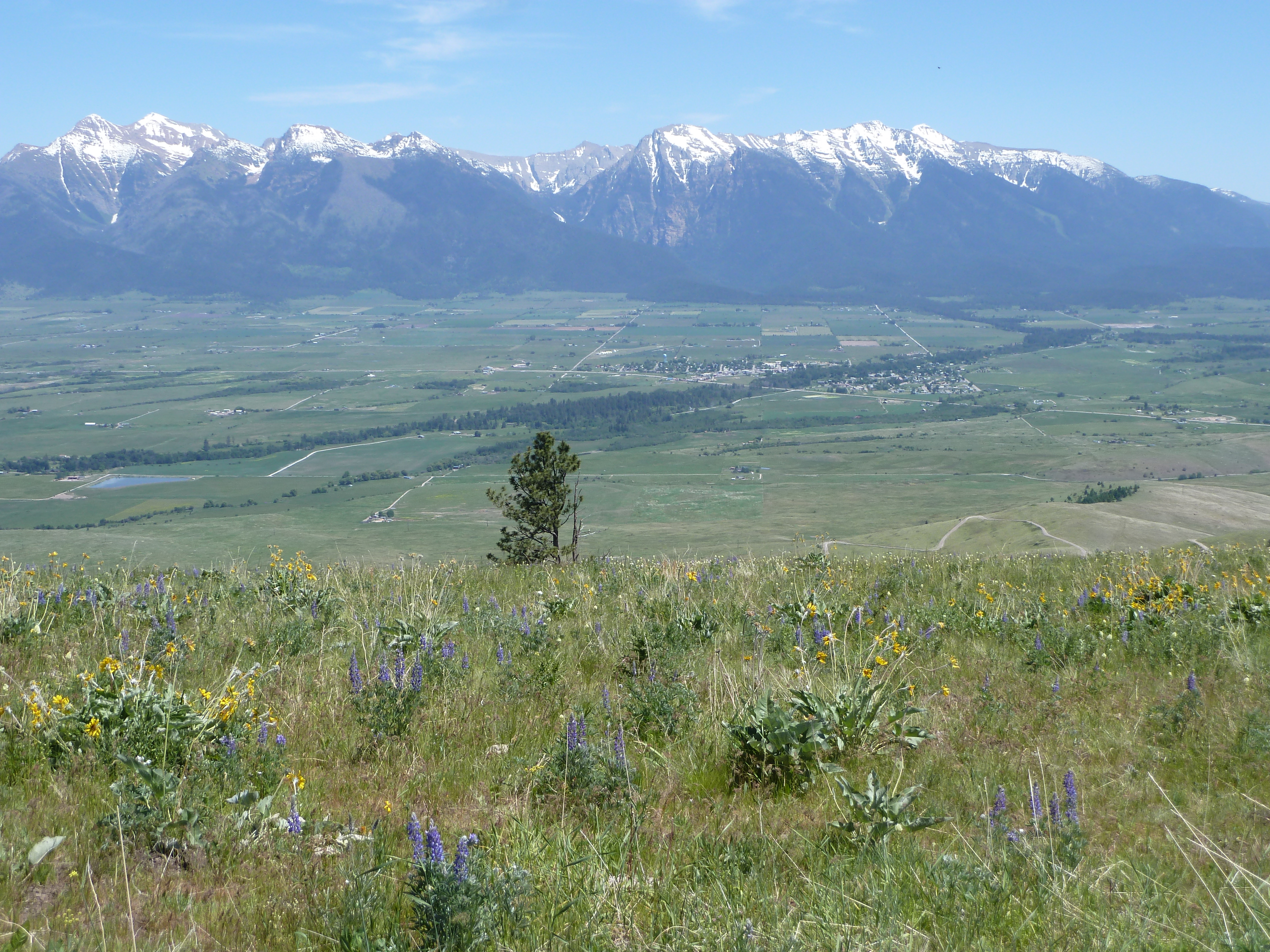 Although it is unusual to see fireflies in Montana or in the western United States for that matter, John Weaver sees fireflies flash every summer on his property in the Mission Valley near the National Bison Range. This rare firefly habitat was protected in 2016 when John placed his 159 acre farm in a conservation easement with Flathead Land Trust.
Although it is unusual to see fireflies in Montana or in the western United States for that matter, John Weaver sees fireflies flash every summer on his property in the Mission Valley near the National Bison Range. This rare firefly habitat was protected in 2016 when John placed his 159 acre farm in a conservation easement with Flathead Land Trust.
Experts are not sure why flashing fireflies are seldom seen west of western Kansas in the United States. Montana State University entomologist, Mike Ivie, said “They’re not supposed to be in the state according to the scientific literature, but they’re here. They’re very much at the margins of where they can live.”
 Montana presents several problems for the flashing fireflies. The flashes of light are how the male and female fireflies find each other, so if the fireflies flash earlier in the evening they’re glow might not even be noticed since days are so long in Montana in summer. They have a hard time getting their flash going when temperatures are low as they can be during Montana nights. Winter is also a concern since the fireflies’ larvae need water warm enough to keep them from freezing. That’s why many of the documented firefly sightings in the state have been around hot springs or springs where the water temperature is fairly constant. Most species of firefly spend the winter in larval form in the soil or in rotting logs. Perhaps that is why the fireflies live on the John Weaver conservation easement property. John’s property has two spring creeks and a few years ago he placed portions of dead cottonwood trees over the creek to create natural habitat for wildlife. Shortly after he placed the logs, he noticed the fireflies.
Montana presents several problems for the flashing fireflies. The flashes of light are how the male and female fireflies find each other, so if the fireflies flash earlier in the evening they’re glow might not even be noticed since days are so long in Montana in summer. They have a hard time getting their flash going when temperatures are low as they can be during Montana nights. Winter is also a concern since the fireflies’ larvae need water warm enough to keep them from freezing. That’s why many of the documented firefly sightings in the state have been around hot springs or springs where the water temperature is fairly constant. Most species of firefly spend the winter in larval form in the soil or in rotting logs. Perhaps that is why the fireflies live on the John Weaver conservation easement property. John’s property has two spring creeks and a few years ago he placed portions of dead cottonwood trees over the creek to create natural habitat for wildlife. Shortly after he placed the logs, he noticed the fireflies.
John’s knowledge of wildlife no doubt was instrumental in his sighting of fireflies and his interest in placing his land in a conservation easement. He has a PhD in wildlife biology and works for the Wildlife Conservation Society based in Bozeman. Over the past 25 years, John has played many key roles in large carnivore conservation in the United States and Canada focusing on large landscape conservation, wildlife connectivity and adaptation to climate change. John has held leadership positions with the U.S. Forest Service and U.S. Fish & Wildlife Service for several endangered species, including grizzly bears.
 John’s easement property is part of a wildlife migration corridor between the Mission Mountains and the bison range. Black bear, grizzly bear, white-tailed deer, hawks, waterfowl, and many other birds, small mammals, reptiles, and amphibians use the property. It has over a half mile of Sabine Creek and an unnamed creek (both spring-fed) and 38 acres of diverse and unique wetlands that serve as important wildlife habitat. One of the forested wetlands on the property containing quaking aspen and skunk cabbage has comparable value to a wetland community listed as “imperiled” by the Montana Natural Heritage Program.
John’s easement property is part of a wildlife migration corridor between the Mission Mountains and the bison range. Black bear, grizzly bear, white-tailed deer, hawks, waterfowl, and many other birds, small mammals, reptiles, and amphibians use the property. It has over a half mile of Sabine Creek and an unnamed creek (both spring-fed) and 38 acres of diverse and unique wetlands that serve as important wildlife habitat. One of the forested wetlands on the property containing quaking aspen and skunk cabbage has comparable value to a wetland community listed as “imperiled” by the Montana Natural Heritage Program.
John’s property is also a working ranch and he wanted to maintain the open space on his land to continue traditional agricultural practices on the rich soils and to raise horses. Over twenty-five percent of John’s ranch has been designated as “prime farmland” or “farmland of local importance” by the Natural Resource Conservation Service.
Flathead Land Trust was able to purchase the conservation easement from John with funding from a North American Wetlands Conservation Act grant. “Purchased conservation easements are a great tool for conserving important fish and wildlife habitat on private lands, especially for those with little or modest income. These private lands are a critical component of the overall landscape for wildlife, particularly as developments continue to degrade habitat and displace wildlife. Protecting wetlands and riparian areas will become ever more important as climate change alters these landscapes and hotspots for biodiversity. I was keen to partner with a respected local land trust (Flathead Land Trust) to conserve these natural values of my property,” said John Weaver.